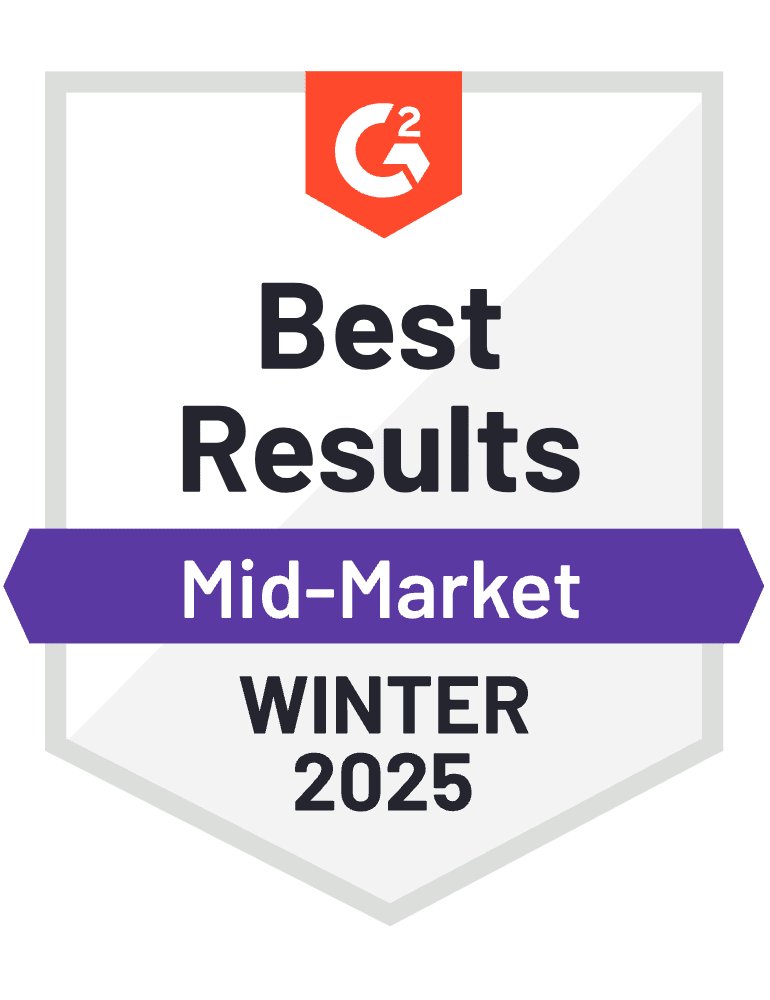The Best IT Asset Software for Simplified Management in 2025

Managing IT assets effectively is crucial for businesses in the modern digital landscape. According to a report, 60% of organizations lack a comprehensive IT asset management strategy, which results in wasted resources and operational inefficiencies. As organizations increasingly rely on technology for daily operations, ensuring the optimal use of IT resources becomes indispensable.
Yet, traditional methods like spreadsheets or manual tracking often lead to inefficiencies, higher costs, and compliance risks. Enter IT asset management software—a comprehensive tool designed to simplify, optimize, and secure IT operations. This blog explores the fundamentals of ITAM, its benefits, key features of the best software solutions, and tips for selecting the right tool for your business.
Understanding IT Asset Management
What Is IT Asset Management?
At its core, IT asset management (ITAM) is the practice of tracking and managing an organization’s IT assets throughout their lifecycle. IT assets can include:
- Hardware: Desktops, laptops, servers, networking devices, and peripherals.
- Software: Applications, licenses, and operating systems.
- Cloud-Based Tools: Virtual machines, SaaS subscriptions, and cloud storage.
IT asset software ensures that these assets are efficiently utilized, secured, and accounted for, providing a strategic advantage to businesses by optimizing costs, improving productivity, and mitigating risks.
Why Is ITAM Important?
- Cost Efficiency: Inefficient asset tracking often results in redundant purchases, underutilized licenses, and wasted resources. ITAM identifies these inefficiencies, ensuring that businesses only pay for what they need.
- Enhanced Productivity: Employees require the right tools at the right time to perform their duties effectively. ITAM ensures that assets are allocated, maintained, and replaced in a timely manner, avoiding operational disruptions.
- Risk Mitigation: Untracked or unmonitored assets pose significant security risks, such as data breaches, non-compliance penalties, or intellectual property theft. IT asset software helps organizations proactively address these vulnerabilities.
- Improved Compliance: Regulatory bodies often demand strict adherence to licensing agreements and data privacy laws. IT asset management software simplifies the process by maintaining accurate records for audits and renewals.
Challenges in Manual ITAM
Relying on manual methods for ITAM often leads to:
- Inconsistent Tracking: Spreadsheets fail to capture real-time updates, leading to discrepancies.
- Time-Consuming Processes: Manual audits and compliance checks require significant time and resources.
- Higher Error Rates: Human error in data entry or misclassification of assets can lead to costly mistakes.
Modern ITAM software resolves these issues with automation, centralized tracking, and actionable insights.
Key Features of the Best IT Asset Software
Choosing the right IT asset software requires a clear understanding of its key features. Let’s dive into the capabilities that make ITAM software indispensable:
- Centralized Asset Tracking: Consolidating all asset data into a single platform eliminates silos, ensuring that information is accessible and up to date. This feature simplifies inventory management across multiple locations or departments.
- Real-Time Monitoring and Reporting: Effective decision-making requires accurate and timely data. The best IT asset software offer dashboards and reporting features that provide visibility into asset performance, usage, and health.
- Automated License and Compliance Management: Avoiding penalties or legal issues is critical. Automated tools ensure that software licenses are current, compliance requirements are met, and renewals are scheduled without manual intervention.
- Lifecycle Management: Tracking assets from procurement to retirement ensures timely upgrades, maintenance, or replacements, minimizing downtime and maximizing asset value.
- Integration Capabilities: IT asset management software should seamlessly integrate with existing systems like ERP, ITSM, and helpdesk tools, creating a unified ecosystem for streamlined operations.
- Scalability: As businesses grow, their IT needs evolve. Scalable software accommodates expanding inventories and user bases without compromising performance.
- Security Features: Robust security measures, such as data encryption and role-based access controls, protect sensitive information from unauthorized access or breaches.
- User-Friendly Interface: A well-designed interface ensures that users can navigate the system easily, reducing the learning curve and improving adoption rates.
- Customization and Support: Every business has unique requirements. Customizable features and responsive customer support enhance the tool’s usability and reliability.
How IT Asset Software Simplifies Management
- Automates Manual Processes: Repetitive tasks like inventory updates, compliance checks, and license renewals are automated, saving time and reducing errors.
- Provides Enhanced Visibility: Detailed reports and visual dashboards offer a comprehensive view of asset usage, helping businesses identify inefficiencies and optimize resources.
- Reduces Costs: ITAM software uncovers underutilized assets, ensuring businesses only invest in necessary resources and avoid overspending.
- Ensures Compliance: With features like automated alerts and audit trails, businesses can confidently navigate regulatory landscapes without fear of non-compliance penalties.
- Improves Lifecycle Management: Predictive analytics and lifecycle tracking enable businesses to plan upgrades or replacements proactively, avoiding costly downtime.
Top IT Asset Software Options in 2024
Here’s a comparison of leading IT asset management tools:
| Software | Best For | Key Features | Pricing |
|---|---|---|---|
| Asset Management 365 | Large Enterprises | ITSM integration, advanced analytics, lifecycle management | Custom quotes |
| Asset Panda | SMBs | Mobile app, barcode scanning, customizable workflows | Starting at $1,500/year |
| ManageEngine Asset Explorer | IT-Focused Teams | Real-time tracking, software license management | Starting at $995/year |
| Fresh service | Cloud-First Approach | Automated workflows, lifecycle tracking | Starting at $19/user/month |
| Ivanti ITAM | Compliance-Focused | Software metering, risk assessment | Custom quotes |
Each of these tools caters to specific needs, from small businesses to large enterprises. Evaluating features, scalability, and pricing is crucial to making the right choice.
Choosing the Right IT Asset Software
Selecting asset management software involves more than just comparing features. Here’s a step-by-step guide to finding the perfect match:
- Assess Your Needs
- Scale of Operations: Identify the number of assets and users your business handles.
- Asset Types: Ensure the software supports hardware, software, and cloud resources.
- Future Growth: Choose a scalable solution to accommodate your business’s evolving needs.
- Set a Budget
- One-Time Costs: Evaluate initial setup fees for on-premises solutions.
- Recurring Costs: Consider subscription models for cloud-based tools.
- Hidden Expenses: Factor in costs for add-ons, integrations, or premium support.
- Prioritize Integration
- Ensure compatibility with existing systems like ERP, ITSM, and helpdesk software to avoid data silos and inefficiencies.
- Evaluate Security and Compliance
- Look for features like data encryption, access controls, and compliance tracking.
- Ensure the software supports relevant standards like GDPR, HIPAA, or ISO 27001.
- Test Before You Buy
- Free Trials: Leverage trial periods to explore usability and functionality.
- Team Feedback: Involve end-users to ensure the tool aligns with operational needs.
Real-World Impact: A Case Study
Challenge: A mid-sized IT firm relied on spreadsheets for asset tracking, leading to frequent compliance violations and inefficient resource allocation.
Solution: After implementing IT asset software, the firm experienced:
- 30% Cost Reduction: Through optimized asset utilization.
- 100% Audit Compliance: With automated license management.
- Increased Productivity: By eliminating manual processes.
Conclusion
IT asset management software is no longer an option—it’s a necessity for businesses aiming to thrive in a tech-driven world. By automating workflows, improving visibility, and ensuring compliance, ITAM tools deliver significant value.
Whether you’re a small business or a global enterprise, investing in our asset management 365 can drive efficiency, reduce costs, and enhance operational agility. Take the first step toward simplified IT management by exploring the options and tailoring your choice to your business’s unique needs.
Frequently Asked Questions
1. What is IT Asset Management Software, and why is it important?
IT Asset Management (ITAM) software is a tool designed to help businesses track, manage, and optimize their IT assets, including hardware, software, and cloud-based resources, throughout their lifecycle. It is important because it automates manual processes, reduces costs, enhances productivity, ensures compliance with regulatory standards, and mitigates risks such as data breaches or license violations.
2. What are the key features to look for in IT asset software?
When selecting IT asset software, look for the following features:
- Centralized asset tracking
- Real-time monitoring and reporting
- Automated license and compliance management
- Lifecycle management
- Integration capabilities with tools like ERP and ITSM
- Scalability for growing businesses
- Robust security features
- User-friendly interface
- Customization options and responsive customer support
3. How does IT asset software improve compliance management?
IT asset software simplifies compliance by:
- Automating license tracking to avoid penalties.
- Maintaining detailed records of software usage and asset ownership.
- Providing audit trails and alerts for license renewals or regulatory requirements.
- Ensuring adherence to industry standards like GDPR, HIPAA, or ISO 27001.
This reduces the risk of non-compliance penalties and ensures businesses are audit-ready.
4. What are some common challenges businesses face without IT asset software?
Businesses relying on manual methods for IT asset management often encounter:
- Difficulty tracking assets across multiple locations.
- Errors due to manual data entry.
- Time-consuming compliance audits.
- Inefficient asset utilization leading to unnecessary expenses.
- Increased risks of data breaches or non-compliance.
IT asset software addresses these challenges by automating processes, centralizing data, and offering actionable insights.
5. What are some top IT asset management tools available in 2025?
Some of the best IT asset management tools for 2024 include:
- ServiceNow: Ideal for large enterprises with advanced ITSM integration.
- Asset Panda: User-friendly and customizable, great for SMBs.
- ManageEngine Asset Explorer: Real-time tracking and helpdesk integration.
- Fresh service: Cloud-first with automated workflows and lifecycle management.
- Ivanti ITAM: Focused on license compliance and risk assessment.









_svxLrd-8yH.png)

_2VYSFUTN5m.png)

_JiluXJRGNl.svg)

_2djTKNocf.png)





_Rapo0hRMBy.png)


























